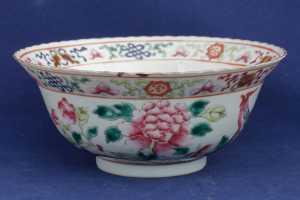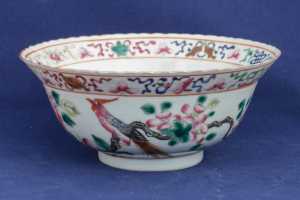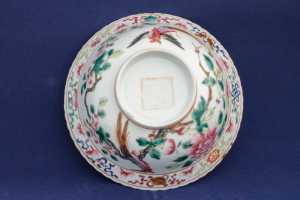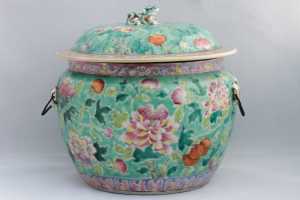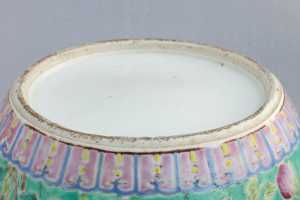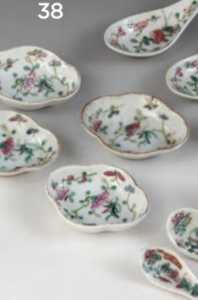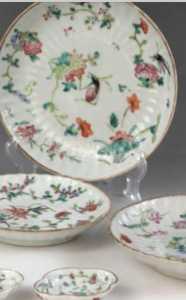The Chinese and Asian Art Forum. For Fans, Collectors and Dealers.
 Basic Rules For the BidAmount Asian Art Forum: Talk about whatever you want. You can even discuss and offer things that are for sale if they are authentic. Maximum image file size per post is 2 MB. Images of 700pxl x 700pxl are optimal if saved at a medium resolution. Be respectful of others and enjoy yourself. Click the YouTube link for a brief tutorial on using the forum. You can also EMBED Videos by cutting and pasting from You-Tube, Vimeo etc.
Basic Rules For the BidAmount Asian Art Forum: Talk about whatever you want. You can even discuss and offer things that are for sale if they are authentic. Maximum image file size per post is 2 MB. Images of 700pxl x 700pxl are optimal if saved at a medium resolution. Be respectful of others and enjoy yourself. Click the YouTube link for a brief tutorial on using the forum. You can also EMBED Videos by cutting and pasting from You-Tube, Vimeo etc.
NOTE: To post an item or add a new post, click open the category title from the FORUM LIST, and CLICK the Blue ADD TOPIC button.
@jjytlee I haven’t found one seal mark like mine anywhere very unusual. I’m searching for clues. Thanks for your help
@lotusblack Set aside the mark and focus on the decoration. Mark is not wrong that the ruyi border and lapets around the base were popular in the Guangxu.
So, look for known examples of Tongzhi and Guangxu pieces for comparison.
There probably is some history that explains the use of Tongzhi marks in the Guangxu (maybe loyalists…just a wild guess).
However, the learning comes from studying the piece, not so much the mark.
With that, here is a much better quality Tongzhi M&P piece, but has a ruyi border and lapets, as well as a floral design with some common form and spacing.
https://www.christies.com/lot/lot-5495529
@greeno107 thanks for your help. After researching many articles I didn’t find any time indicators by style indicators. I believe this jar was made in Imperial kiln in Jingdezhen during the war buy the Peranakan. Most probable the late 19th century.
@lotusblack Peranakan imperial kiln? Are you being funny?
Straits porcelains are far from my area of knowledge, but I would assume ‘imperial’ quality from any part of Asia would be higher than what your piece shows.
@greeno107 no there is a article that during the war the Imperial kiln was going broke and leased space to Straits potters they produce export that where meant for Malaysia south Asian. This stamp was used during this time to identify these wares for export for Shanghai dealers.
Hi Brian,
Could you please provide us with a copy/link to this site?
Most interesting.
Mark
Thanks Brian,
Interesting article!
Not entirely sure your jar is straits ware.
The lack of turquoise along with the neatness of the artists work suggests to me that it's chinese.
I am not an expert on these types. Birgit @shinigami collects straits porcelain so she may have an opinion.
Regardless your example is beautiful.
Mark
I read this article a while back when I was researching a vase that I had seen referred to as straits porcelain. I didn't end up any the wiser, partly because although I see why it might be called that, I didn't feel the patterns were quite correct.
Like Mark, I am not convinced that your ginger jar is of that type unless that mark were only used on straits pieces?
He does however seem to be saying that Kamchengs were only made for that market, so therefore even those decorated in Chinese mainland style were intended for export which would explain why I have seen nice famille rose pieces, not typical peranakan colours, described as such. They don't attain the same price as the more flamboyant Nyonya style ones, but from what the article says, the relevance in their lives was less.
Possibly the same may be true of some ginger jars, it isn't something I have really thought about. It will be interesting to hear what Birgit thinks.
I did what was suggested by observing the boarder decorations straits are distinct and Chinese are different also. White and green enamels are more of a straits trait and flowers instead of dots on the ruyi boarder. The lotus patters I see on the straits. There are a lot of white background straits examples that carry this theory.
The field of Straits porcelain is quite narrow, with limited forms and decorations. The problem is that sellers call almost anything Peranakan/Straits/Nonya/Nyonya because it was exported to South East Asia or looks a bit colorful. There are only three books dealing with the subject, so it's easy to learn about this special style, but it's hard to find (affordable) items on the market. Some items are stamped, many are not, but it's possible to determine the age by quality and comparing with examples in the books.
There are two categories of decoration, the white background and the colored background. The white background is easier to find, modest plates and bowls like this sometimes pop up on Ebay or in auctions. It has a definite look with phoenix and peonies. In this Guangxu example of mine the bird is rather pheasant-like, but the decoration is typical: densely painted decoration, buddhist pattern on the serrated rim. The stamped mark is unreadable.
The colored background is very typical though often confused with colorful late Qing items for the Chinese market. On Peranakan porcelain there are always either phoenix and peonies or peonies alone, and the pattern is always rather densely packed. This is most probably a Tonghzi kamcheng from Malacca, the green blue being the most common among the colored backgrounds.
In case anyone is interested in learning about this interesting field, the three books on the subject are:
- Nyonya ware and Kitchen Ch'ing 0-19-582516-0
- Kee Ming-Yuet: Peranakan Chinese Porcelain 978-0-8048-4818-3
- Ho Wing Meng: Straits Chinese Porcelain 978-981-232-758-4
Birgit
Thanks Birgit, there is quite a difference in the appearance of the white background ones that you have posted and Brian's jar. Your pictures are quite distinctly of Strait's porcelain. You are quite right: the term is used too often and inaccurately.
Not all straits white background look as show above there are many variations from almost 80 years of production. Here is a straits set it look totally different but still is are straits pieces.
Hi Brian, in the very narrow definition of the books this is export porcelain for South East Asia but no Straits porcelain.
Birgit
Thanks for visiting "The BidAmount Asian Art Forum | Chinese Art"
If you sell on eBay, or have a shop feel free to post images and descriptions and links.
Check back often for discussion about the latest news in the Chinese art and antique world. Also find out about the latest Asian art auctions at Sotheby's, Christie's, Bonhams and Tajans.
Auction results for: fine porcelain, ceramics, bronze, jade, textiles and scholar's objects. As well as Japanese, Thai, Vietnamese and other Asian cultures.
Thank you,
Peter Combs
Topics and categories on The BidAmount Asian Art Forum | Chinese Art
Kangxi vases, Kangxi dishes and chargers, Kangxi ritual pieces, Kangxi scholar's objects, Qianlong famille rose, Qianlong enamels, Qianlong period paintings, Qianlong Emporer's court, Fine porcelain of the Yongzheng period. Chinese imperial art, Ming porcelain including Jiajing, Wanli, Xuande, Chenghua as well as Ming jades and bronzes.
The BidAmount Asian Art Forum | Chinese Art
A free Asian art discussion board and Asian art message board for dealers and collectors of art and antiques from China, Japan, Korea, Thailand, Cambodia, Vietnam and the rest of Asia. Linked to all of the BidAmount Asian art reference areas, with videos from plcombs Asian Art and Bidamount on YouTube. Sign up also for the weekly BidAmount newsletter and catalogs of active eBay listing of Chinese porcelain, bronze, jades, robes, and paintings.
The art of calligraphy - and for the ancient Chinese it certainly was an art - aimed to demonstrate superior control and skill using brush and ink. Calligraphy established itself as one of the major Chinese art forms during the Han dynasty (206 BCE - 220 CE), and for two millennia after, all educated men were expected to be proficient at it.
The Museum’s collections of Asian art span nearly five millennia and encompass the cultures of China, the Himalayas, India, Japan, Korea, and Southeast Asia. In 2007, the Museum launched an initiative to create dedicated galleries for the collection, beginning with a gallery for the arts of Korea ...
Chinese art is full of symbolism, in that artists typically seek to depict some aspect of a totality of which they are intuitively aware.
China Online Museum is the finest online museum of Chinese art. It features Chinese calligraphy, painting, ceramics, bronzes, carving, and other artworks.
Chinese Ceramics & Works of Art. Overview Upcoming auctions Contacts Auction results ... Christie’s sales of Chinese ceramics and works of art showcase centuries of Chinese history. Held throughout the year in London, New York, Paris and Hong Kong, they attract a wide audience of collectors and connoisseurs vying for pieces as diverse as ...
Explore Asian Art Week. Contact the Specialist Department. Chinese Paintings ... Senior Specialist, Head of Sale. [email protected]. Tel:+1 212 641 5760. Bid in-person or online for the upcoming auction:Fine Chinese Paintings on 10 September 2019 at New York. Bid in-person or online for the upcoming auction:Fine Chinese Paintings on 10 ...
Discover an abundance of must-see art from all corners of a vast continent at Christie’s NY Asian Art Week. From contemporary classical and Chinese paintings to works with exemplary provenance from the Art Institute of Chicago, our Rockefeller Paza galleries will be full of ancient treasures and contemporary masterworks in a salute to the vibrant arts of Asia.
Sold to benefit The Art Institute of Chicago’s Asian Art Acquisition Fund, the sale features 84 lots with a focus on Ming and Qing porcelains, and offers a rare insight into the taste for collecting Chinese ceramics and works of art in the Midwest from the end of the 19th century through the 1980s. Highlights include two Wanli wucai garlic-head vases, a Qianlong mark and period, blue and ...
Specialist, Chinese Paintings, Christie's London Dr Malcolm McNeill is a Specialist in Chinese Paintings at Christie’s, based in London. He previously worked as an assistant curator of the Chinese collections and the Victoria and Albert Museum in London, as a researcher at the British Museum, and as a translator and tour guide at the National Palace Museum in Taipei.
The Christie's Education 2020 Conference: The Chinese Art Market 18 Jun 2019 Christie’s Education is delighted to announce our first international academic conference in Asia which will take place in Hong Kong from 26-27 November 2020 at the Hong Kong Convention and Exhibition Centre and will run in parallel with Christie’s Hong Kong Autumn Auctions.
The summer Chinese Art sale in Hong Kong will feature works of art from several private collections, including Qing porcelains and textile from the collection of the legendary Chinese art dealer A. W. Bahr (1877–1959), fine gilt bronze Buddhist sculptures from an old Hong Kong collection, an East Asian collection of Qing dynasty wine cups and jades, and a Japanese collection of Song ceramics ...
Sotheby's Chinese Works of Art Department holds two auctions each year in London, New York, Hong Kong and Paris.
Chinese Art - View Auction details, bid, buy and collect the various artworks at Sothebys Art Auction House.
With more than 340 Chinese works of art dating from the Neolithic to the Republic periods, highlights of this sale include a selection of Qing Imperial monochromes from the collection of Arnold and Blema Steinberg, early ceramics from the Art Institute of Chicago and Chinese porcelain and works of art from the collection of Henry Arnhold.
Results: Sotheby's Asia Week achieved $52.4 million in six strong auctions, exceeding pre-sale estimates. With 76.5% of lots sold and 60.3% of lots surpassing high estimates, the Asian art sales at Sotheby's indicate continued collector interest in the finest works of art from China, India and and the Himalayas.
Today's sale of Important Chinese Art will proceed as planned with sessions at 10 AM and 2 PM EDT. Sotheby's will be monitoring the weather conditions throughout the day and will be available to coordinate alternative bidding options should conditions make it difficult for clients to attend the auction in person.
Bonhams Chinese Art department is renowned for offering the finest works of art representing the richness and breadth of China's artistic heritage, particularly Imperial porcelain, white and spinach green jades, cloisonné and Buddhist art. Specialised international auctions are held globally, including London, Hong Kong and San Francisco.
Bonhams : Chinese Works of Art We use cookies to remember choices you make on functionality and personal features to enhance your experience to our site. By continuing to use our site you consent to the use of cookies. Please refer to our privacy and cookie policies for more information.
Bonhams Fine Art Auctioneers & Valuers: auctioneers of art, pictures, collectables and motor cars. We use cookies to remember choices you make on functionality and personal features to enhance your experience to our site. By continuing to use our site you consent to the use of cookies. ... Chinese Art (US) General enquiries
Bonhams : Fine Chinese Art We use cookies to remember choices you make on functionality and personal features to enhance your experience to our site. By continuing to use our site you consent to the use of cookies. Please refer to our privacy and cookie policies for more information.
Bonhams Fine Art Auctioneers & Valuers: auctioneers of art, pictures, collectables and motor cars Bonhams : Asian Art We use cookies to remember choices you make on functionality and personal features to enhance your experience to our site.
Bonhams are international auctioneers of fine Chinese and Japanese art. We specialise in rare Imperial and Export Chinese ceramics and works of art, as well as Japanese ceramics, fine and decorative works of art from the Neolithic Period to the 20th century. View on map
Bonhams Fine Art Auctioneers & Valuers: auctioneers of art, pictures, collectables and motor cars. We use cookies to remember choices you make on functionality and personal features to enhance your experience to our site. By continuing to use our site you consent to the use of cookies. ... Asian Art Bonhams. Work. 22 Queen St.
